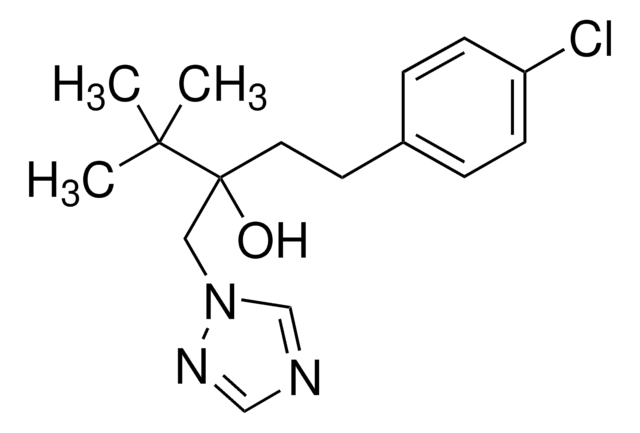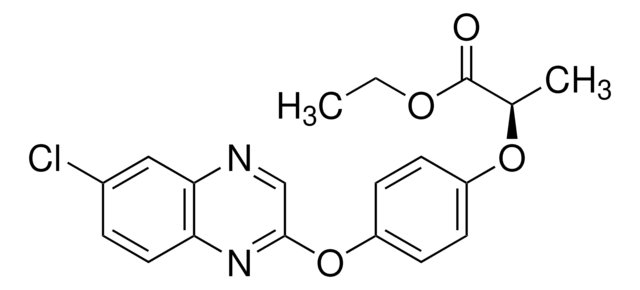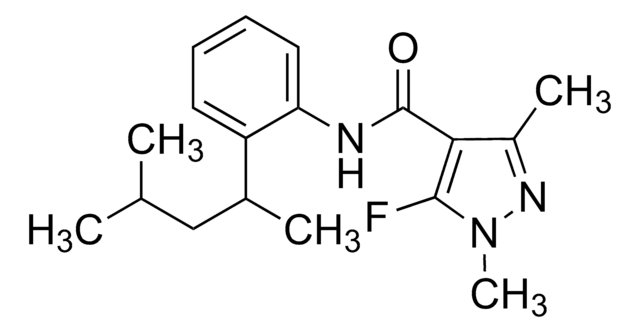Kluczowe dokumenty
32581
Bixafen
PESTANAL®, analytical standard
Synonim(y):
N-(3′,4′-Dichloro-5-fluorobiphenyl-2-yl)-3-(difluoromethyl)-1-methylpyrazole-4-carboxamide
About This Item
Polecane produkty
klasa czystości
analytical standard
Poziom jakości
linia produktu
PESTANAL®
okres trwałości
limited shelf life, expiry date on the label
metody
HPLC: suitable
gas chromatography (GC): suitable
Zastosowanie
agriculture
environmental
format
neat
ciąg SMILES
Cn1cc(C(=O)Nc2ccc(F)cc2-c3ccc(Cl)c(Cl)c3)c(n1)C(F)F
InChI
1S/C18H12Cl2F3N3O/c1-26-8-12(16(25-26)17(22)23)18(27)24-15-5-3-10(21)7-11(15)9-2-4-13(19)14(20)6-9/h2-8,17H,1H3,(H,24,27)
Klucz InChI
LDLMOOXUCMHBMZ-UHFFFAOYSA-N
Szukasz podobnych produktów? Odwiedź Przewodnik dotyczący porównywania produktów
Opis ogólny
Zastosowanie
Polecane produkty
Informacje prawne
Hasło ostrzegawcze
Warning
Zwroty wskazujące rodzaj zagrożenia
Zwroty wskazujące środki ostrożności
Klasyfikacja zagrożeń
Aquatic Acute 1
Kod klasy składowania
11 - Combustible Solids
Klasa zagrożenia wodnego (WGK)
WGK 2
Temperatura zapłonu (°F)
Not applicable
Temperatura zapłonu (°C)
Not applicable
Wybierz jedną z najnowszych wersji:
Masz już ten produkt?
Dokumenty związane z niedawno zakupionymi produktami zostały zamieszczone w Bibliotece dokumentów.
Klienci oglądali również te produkty
Nasz zespół naukowców ma doświadczenie we wszystkich obszarach badań, w tym w naukach przyrodniczych, materiałoznawstwie, syntezie chemicznej, chromatografii, analityce i wielu innych dziedzinach.
Skontaktuj się z zespołem ds. pomocy technicznej








![3,9-Bis(2,4-dicumylphenoxy)-2,4,8,10-tetraoxa-3,9-diphosphaspiro[5.5]undecane](/deepweb/assets/sigmaaldrich/product/structures/163/089/23367906-df78-4721-b2a6-690cd4c2a9a9/640/23367906-df78-4721-b2a6-690cd4c2a9a9.png)


